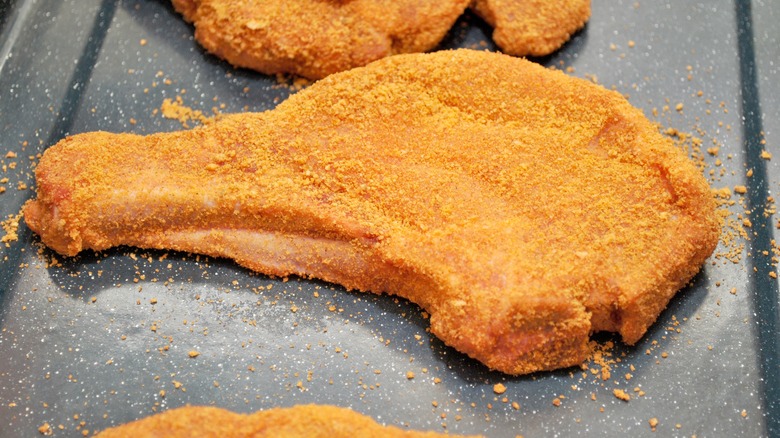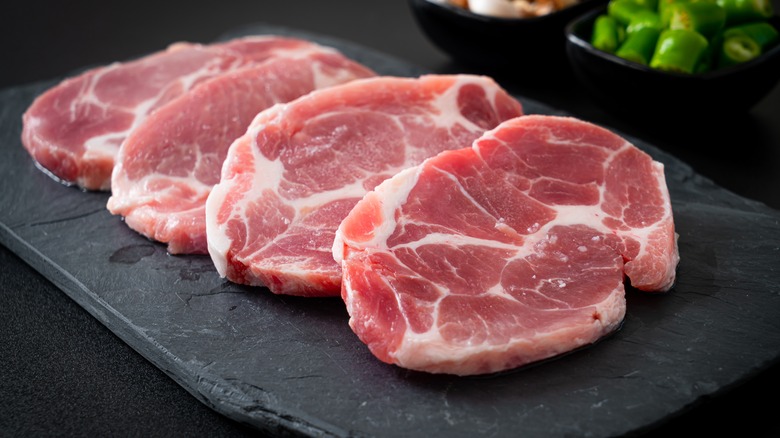The Best Cut Of Pork For Making A Shake-And-Bake Dinner
Shake-and-bake dinner is named after Kraft Shake 'N Bake, the iconic crunchy, "seasoned just right" blend of savory, herbaceous bread crumbs for coating roasted or pan-seared meat. It may have earned a reputation as being an "easy" low-prep dinner go-to for home cooks, but there's a reason why Shake 'N Bake has stuck around: It's delicious. Home cooks can also make their own seasoned breadcrumb blend with panko bread crumbs and any combination of paprika, celery salt, garlic powder, salt, pepper, onion powder, dried parsley flakes, and dried thyme.
To get the most out of this convenient workhorse of an ingredient when it comes to your breaded pork chops, the consensus among shake-and-bakers is that thinner cuts of pork crisp up better. The ideal pork loin chops are ½-inch to 1-inch thick. Either way, try to opt for pork chops that are all roughly the same size and thickness so that they'll finish cooking at relatively uniform times.
In a piece for The Takeout, Rob Levitt (head butcher and Chef de Cuisine of the iconic Publican Meats in Chicago) shares his recipe for shake-and-bake pork chops that live up to a career butcher's standards. He recommends using pork chops that are one inch thick and trimmed with about ¼ inch of fat along the edge. To cook, Levitt bakes the coated, breaded chops on a foil-lined baking sheet at 400 degrees Fahrenheit until they reach an internal temperature of 140 degrees Fahrenheit.
Lean, mean, shakin' machine
From this point, the real debate is whether bone-in or boneless is better when making shake-and-bake pork chops. Ultimately, "to bone" or "not to bone" is a matter of preference. Boneless takes less time, but bone-in imparts richer flavor and makes for a juicier bite.
According to Frank Proto, multiple-time executive chef and one of the head instructors at the Institute of Culinary Education, the bone can serve a utilitarian purpose when cooking a thick pork chop cut like this. When you whip out your instant-read digital meat thermometer, insert it as close to the bone as possible. As Proto explains to Epicurious, "Closest to the bone is going to be the last piece that cooks." (Bone-in, center-cut pork chops are Proto's preferred cut to work with.)
Still, boneless chops can be easier to work with for folks who aren't used to cooking with pork and still taste terrific. As Levitt explains, "This method works for cooking average-sized chops (about an inch thick), bone-in or boneless, though for smaller or boneless chops I would pull them from the oven a few minutes earlier." If you use boneless pork chops, decrease the cooking time by roughly five minutes. Either way, you'll end up with chops rockin' a salty crust and juicy interior, and you can elevate them with a velvety pan sauce or some sauteed aromatics like shallots, fresh thyme, and chopped garlic.

